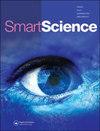基于元启发式优化器的需求侧负荷转移和柔性负荷曲线技术
IF 1.4
Q2 MULTIDISCIPLINARY SCIENCES
引用次数: 0
摘要
供需侧资源管理和需求侧负荷管理是解决电力系统不确定性的重要技术。需求侧负载管理允许重塑负载分布,以降低峰值需求和总体成本。使用不同的需求响应程序以及传统的数值和元启发式方法,已经解决了许多需求侧负载管理问题。然而,它只能应用于有限数量的特定类型的设备。在用于需求侧负荷管理的六种直接负荷控制需求响应技术中,本研究比较了日前负荷转移和灵活负荷曲线DSLM技术的性能。这些技术可以用于更多类型的更多数量的设备。需求侧负荷管理问题被公式化为最小化问题,以实现峰值需求降低和成本最小化。采用新的元启发式优化器进行需求侧负荷管理,并对降低成本和峰值负荷进行了比较分析。利用MATLAB的fmincon函数对仿真结果进行了验证。仿真结果表明,上述算法可以应用于更多类型的大量设备,通过最小化成本和峰值负载需求来实现可观的节约。此外,从系统运营商的角度来看,负荷转移需求侧负荷管理技术比从客户的角度来看更有益。相比之下,从客户的角度来看,灵活的负荷曲线需求侧负荷管理技术更有益。图形摘要本文章由计算机程序翻译,如有差异,请以英文原文为准。
Novel Metaheuristic Optimizers Based Load Shifting and Flexible Load Curve Techniques for Demand-side Load Management
ABSTRACT Supply-and-demand-side resource management and demand-side load management (DSLM) are important techniques for addressing power system uncertainties. Demand-side load management allows the load profile to be reshaped to reduce the peak demand and overall cost. Many demand-side load management problems have been solved using different demand response programmesprograms as well as conventional numeric and metaheuristic methods. However, it can be applied only toonly to a limited number of devices of certain types. Of the six direct load control demand response techniques for demand-side load management, the performance of the day-ahead load-shifting and flexible load curve DSLM techniques are compared in this study. These techniques can be used for a larger number of devices of more types. The demand-side load management problem is formulated as a minimization problem to achieve peak demand reduction and cost minimization. Novel metaheuristic optimizers are used to perform demand-side load management, and comparative analysis is conducted for the cost and peak load reduction. The simulation results are verified using the fmincon function of MATLAB. The simulation results indicate that the aforementioned algorithms can be applied to a larger number of devices of more types to achieve considerable savings by minimizing the cost and peak load demand. Moreover, the load-shifting demand-side load management technique is more beneficial from the system operator’s perspective than from the customer’s perspective. In contrast, the flexible load curve demand-side load management technique is more beneficial from the customer’s perspective. GRAPHICAL ABSTRACT
求助全文
通过发布文献求助,成功后即可免费获取论文全文。
去求助
来源期刊

Smart Science
Engineering-Engineering (all)
CiteScore
4.70
自引率
4.30%
发文量
21
期刊介绍:
Smart Science (ISSN 2308-0477) is an international, peer-reviewed journal that publishes significant original scientific researches, and reviews and analyses of current research and science policy. We welcome submissions of high quality papers from all fields of science and from any source. Articles of an interdisciplinary nature are particularly welcomed. Smart Science aims to be among the top multidisciplinary journals covering a broad spectrum of smart topics in the fields of materials science, chemistry, physics, engineering, medicine, and biology. Smart Science is currently focusing on the topics of Smart Manufacturing (CPS, IoT and AI) for Industry 4.0, Smart Energy and Smart Chemistry and Materials. Other specific research areas covered by the journal include, but are not limited to: 1. Smart Science in the Future 2. Smart Manufacturing: -Cyber-Physical System (CPS) -Internet of Things (IoT) and Internet of Brain (IoB) -Artificial Intelligence -Smart Computing -Smart Design/Machine -Smart Sensing -Smart Information and Networks 3. Smart Energy and Thermal/Fluidic Science 4. Smart Chemistry and Materials
 求助内容:
求助内容: 应助结果提醒方式:
应助结果提醒方式:


